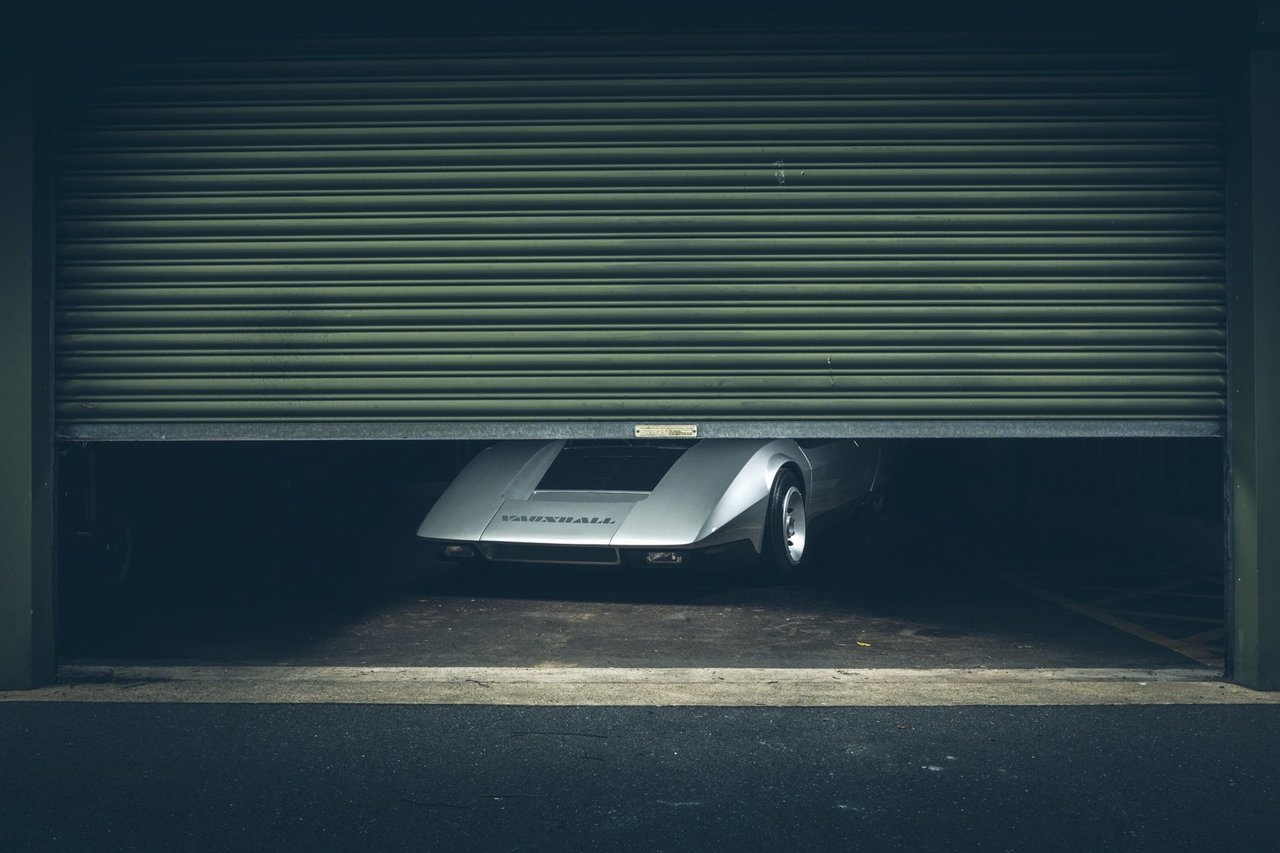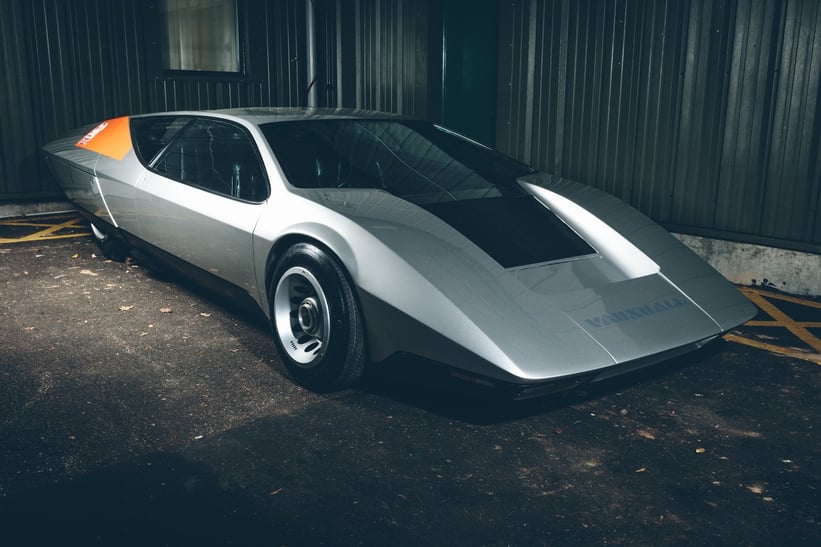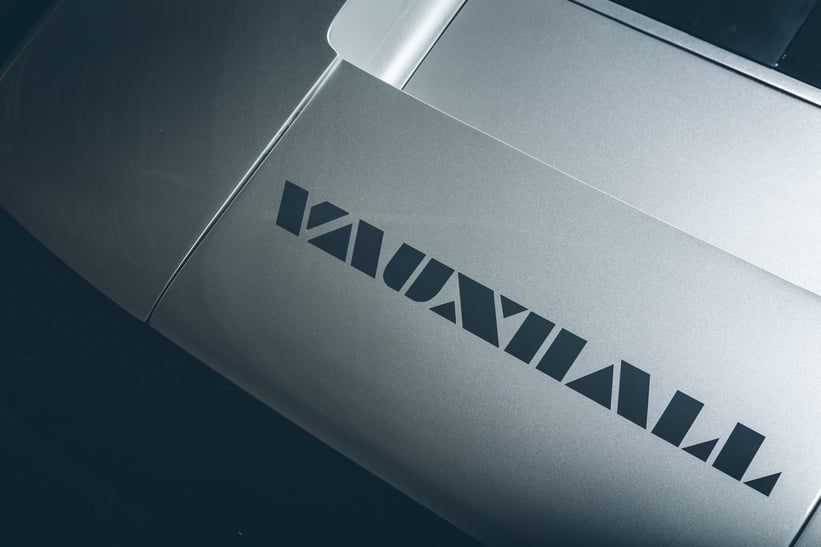As if from outer space



Although one of the oldest automobile manufacturers in Great Britian, it was actually an American-born designer who brought Vauxhall into the big headlines. Wayne Cherry, a graduate of the Art Center College of Design in California, started his design career in 1962 at General Motors and, over the years, helped to design the original Chevy Camaro, Pontiac Firebird, and the Oldsmobile Toronado. In 1965, GM sent the hopeful young man to England, where it had just opened a new design studio for Vauxhall at its headquarters in Luton. For the then 28-year-old, this ‘temporary assignment’ was his chance to make a name for himself in a relatively short time, unlike at corporate headquarters back in Michigan. In 1966, the first Vauxhall concept study ever, the XVR, was presented at the Geneva Motor Show, and while attractive and fully capable, it was just too similar to the recently emerged Corvette, the small series Chevrolet Cheetah, and even the Opel GT. It wasn’t until four years later, in October 1970, — just in time for the London Motor Show — that Vauxhall was able to make a big splash on the scene, courtesy of Cherry, as assistant design director, and his colleagues Chris Field and John Taylor. The SRV (Style and Research Vehicle) landed in Earls Court like a spaceship from another planet, and the press and public surged with patriotic storms of enthusiasm at the sight of the experimental four-seater. While Vauxhall's second trade show novelty, the HC Viva, inevitably faded into the background.
A Le Mans long-tail godfather



Cherry was a motorsport fan, and with the accentuated long tail and forward seating position of the 5.08-meter-long SRV, it’s clear he drew inspiration from the Porsche 917-LH, which had competed in the 1969 Le Mans 24 Hours race, reaching speeds of over 330 km/h. The rear overhang of the low-slung Vauxhall was even 1.31 meters longer than the vehicle’s height, which measured in at 1.05 meters! Similar to the 917s, Cherry also provided mobile aerodynamic aids for the SRV. But instead of ‘flaps’ at the rear, like the Porsche, there was a pedal in the cockpit that could adjust an aerofoil in the nose section. At the same time, an electrically operated levelling system was provided for the rear axle. Also interesting was that it was possible to pump and re-distribute gasoline into different tanks, to ‘trim’ the SRV like an aeroplane.
Just a dummy



The SRV was a pure experimental 3D model, as it was without propulsion, purely because Vauxhall lacked the means to complete it. Its body and chassis were made of wood, fiberglass, and aluminium, and the de Dion rear axle was only provisionally bolted to the rear frame. It came as no surprise that after opening the rear boot, you could only see a ‘fake’ engine, which gave the impression of 2.3-liter, four-cylinder engine with gasoline injection and bi-turbo charging. This disappointed showgoers a bit, as they expected a V8 or, even better, a V12. Behind the engine was an empty spare wheel well, and in the rear, there was still room for six round displays, fuses, and connectors for external test equipment. There were, among other things, indicators for boost pressure and exhaust gas temperature, as well as a manometer, designed to collate air pressure readings from measuring points over the surface of the sleek and undisturbed body.
Four seats and invisible door handles



The large front doors made it easy to get into the front; however, access to the back seats was through counter-opening 'gullwing'-type doors — easy for contortionists, but not so much for everyone else. A real innovation, however, was the hidden exterior handles — a feature that wouldn’t become part of mass-produced models until decades later. Access to the half-faired rear wheels granted swing-out covers.
While the interior was impressive, the steering wheel, which looked like one from a decommissioned submarine, was an obvious blemish. The bucket seats would have done well in a space capsule and were fixed, but the control pedals, steering column, and front seat rake were adjustable to suit individual drivers’ requirements. And apart from a Ferrari-like gearshift and the safety belts that came down from the roof, the rest of the interior was particularly striking. The instrument binnacle was mounted on a hinged pod that — thanks to a sliding mechanism — swivelled out of the way when the driver’s door was opened, thus facilitating entry and exit. All control switches were mounted on the driver’s door and grouped in sequence, as in an aircraft cockpit. The feature of including control switches in the door appeared again — and in much more elegant fashion — in 1992 on the Jaguar XJ220, whose design chief was a certain Geoff Lawson, who, you guessed it, also belonged to the Vauxhall design team in 1970!
Inspiration for young designers

The SRV was shown again at the 1971 Geneva Motor Show and hit the auto show circuit over the years, including attending the 75th anniversary of Vauxhall in 1978. Surprisingly, it took until 1978 for Cherry, Taylor, and the rest of the team to come up with another buzz-inducing design — the Equus, a roadster with a front engine. Meanwhile, the SRV was placed in the Heritage Collection of Vauxhall, where it testifies to the fact that, once given carte blanche, the Vauxhall design studio could compete with any of the other established car design studios. For Wayne Cherry, who GM had entrusted to head the Luton Design Center in 1975, the SRV signalled the start of a long and successful career with GM. In 1983, he led the design team of Opel, another GM Europe subsidiary, from Rüsselsheim am Main, Hesse, Germany, and in 1991, he returned to the USA to take the design lead position for Chevrolet and Geo. By 1992, he was promoted to worldwide vice-president of design. On 1 January 2004, Cherry retired, after 42 years at General Motors. The Vauxhall SRV remains part of his ‘all-time greatest’ designs, and even though it never went into production, it inspired a whole generation of automotive designers.
Photos: Alex Lawrence for Classic Driver © 2017





















